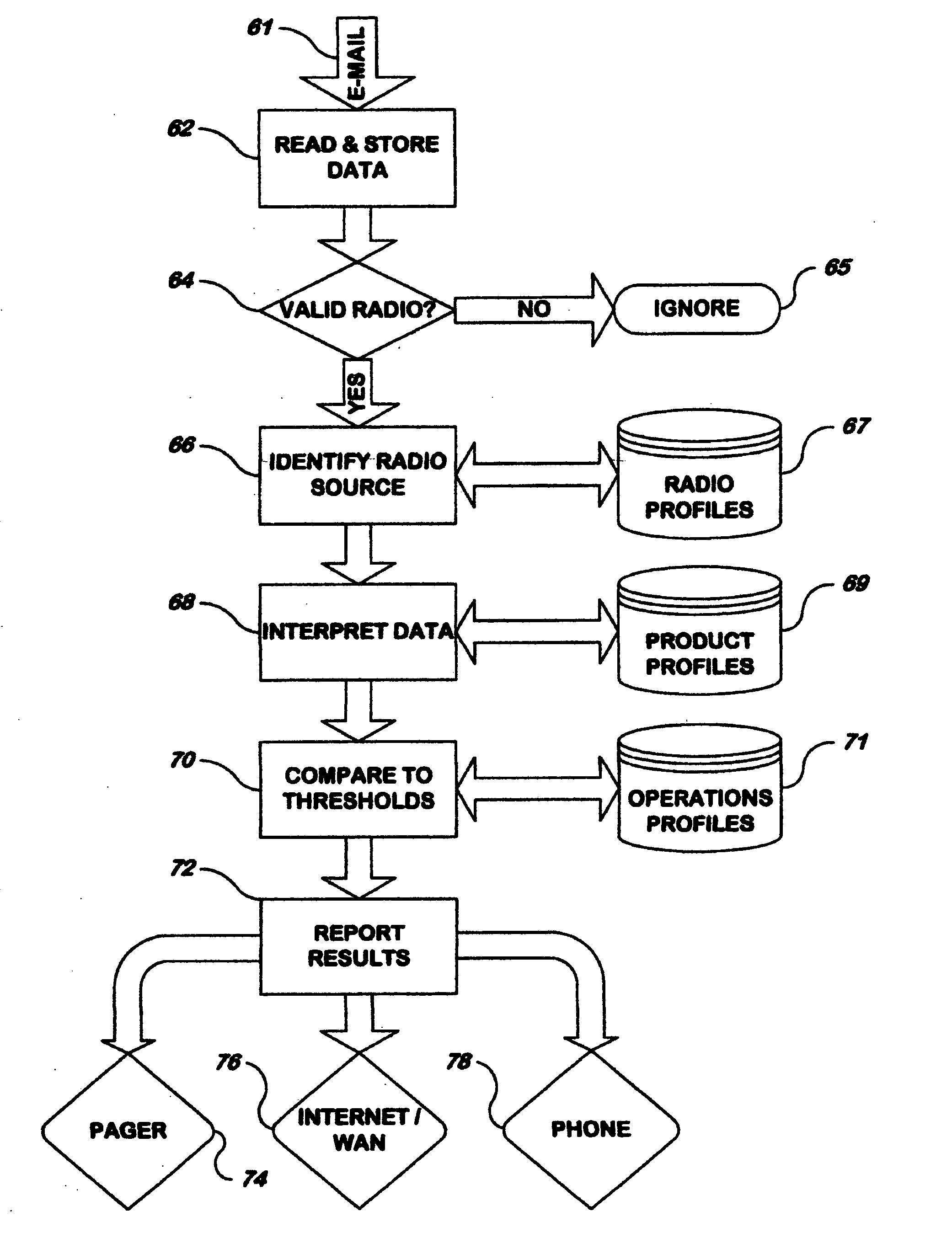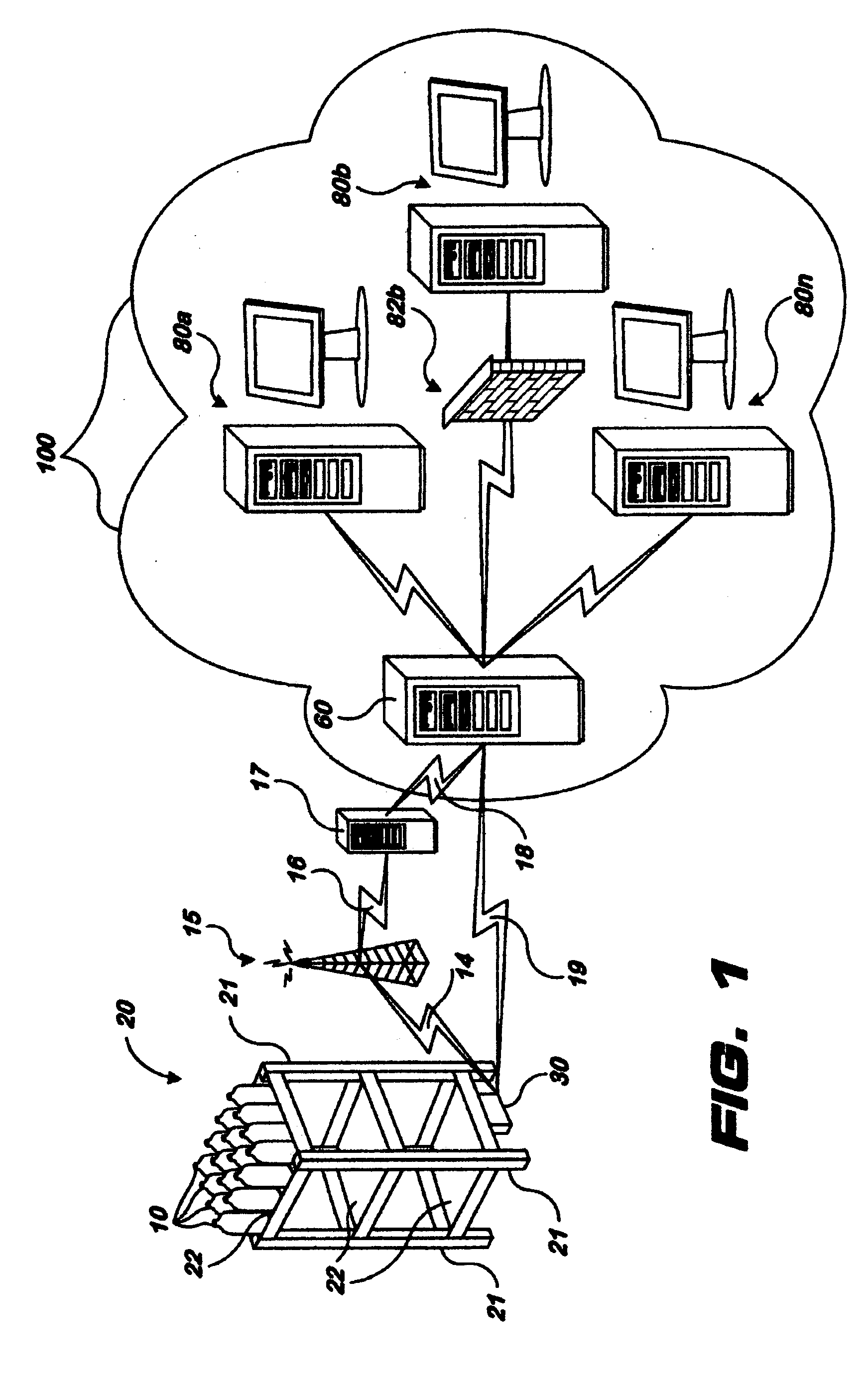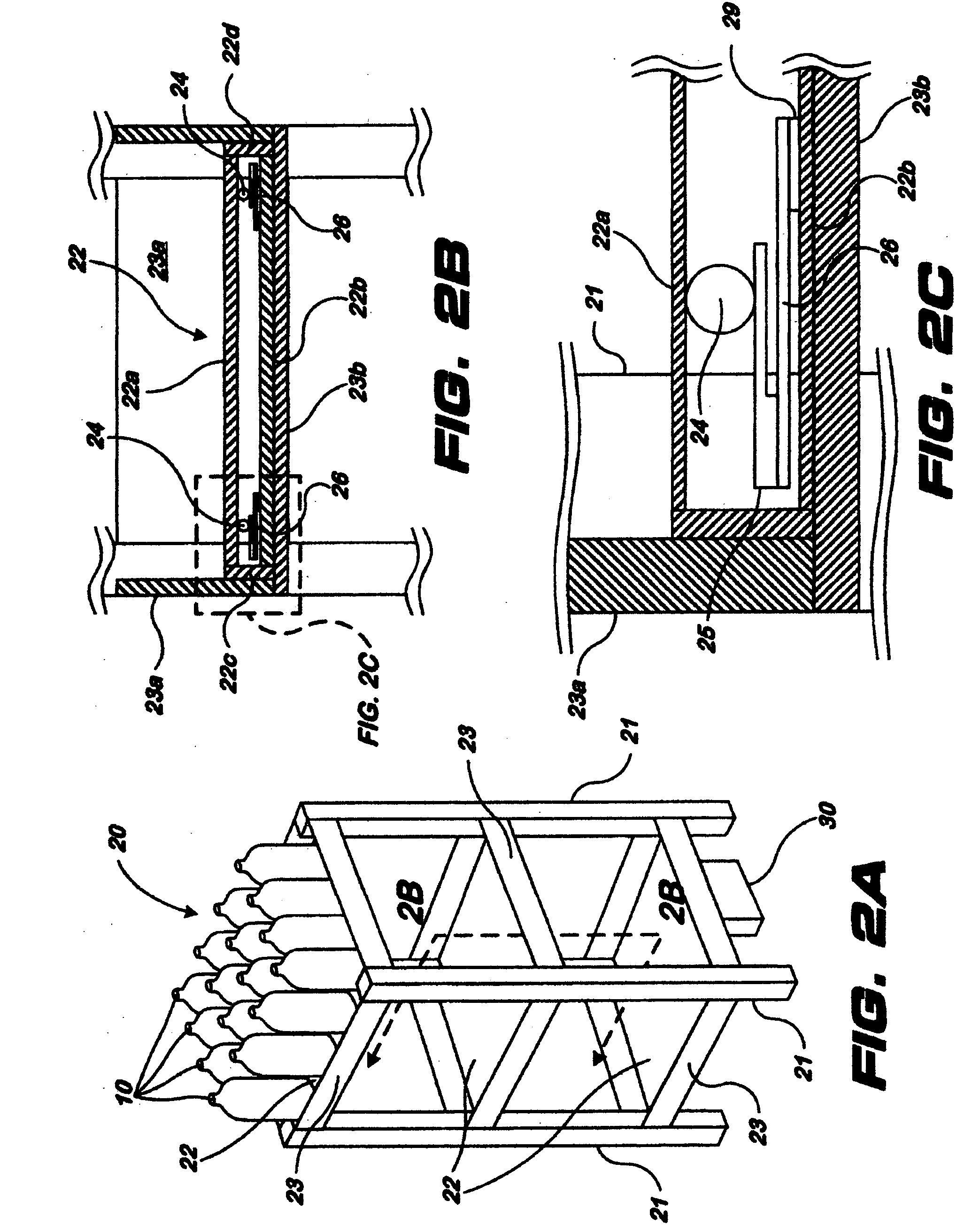System and method for sensing and analyzing inventory levels and consumer buying habits
a technology of applied in the field of system and method for sensing and analyzing inventory levels and consumer buying habits, can solve the problems of cumbersome implementation without affecting, inconvenient installation, and other methods used to gather merchandising data, etc., and achieves high configurable, easy installation, and easy installation
- Summary
- Abstract
- Description
- Claims
- Application Information
AI Technical Summary
Benefits of technology
Problems solved by technology
Method used
Image
Examples
Embodiment Construction
[0022] This application refers in detail below to the systems and methods of sensing and analyzing inventory levels and consumer buying habits, which are illustrated in the accompanying drawings. Wherever possible, the application uses the same reference numbers throughout the drawings to refer to the same or similar items.
[0023]FIG. 1 schematically illustrates a system according to the invention for sensing and analyzing inventory levels of items 10 resting on sensor pads 22 on the shelves 23 of a display rack 20 and consumers' purchasing habits relating to those items 10. Display rack 20 includes a smart hub 30 which collects and records data from sensors deployed to measure a characteristic of items 10 on sensor pads 22, such as total weight. The smart hub 30 also generates and transmits the information reflecting the collected sensor data to a server 60 that is controlled by the company operating the system of the invention. The smart hub 30 can transmit this data at a configur...
PUM
 Login to View More
Login to View More Abstract
Description
Claims
Application Information
 Login to View More
Login to View More - R&D
- Intellectual Property
- Life Sciences
- Materials
- Tech Scout
- Unparalleled Data Quality
- Higher Quality Content
- 60% Fewer Hallucinations
Browse by: Latest US Patents, China's latest patents, Technical Efficacy Thesaurus, Application Domain, Technology Topic, Popular Technical Reports.
© 2025 PatSnap. All rights reserved.Legal|Privacy policy|Modern Slavery Act Transparency Statement|Sitemap|About US| Contact US: help@patsnap.com



